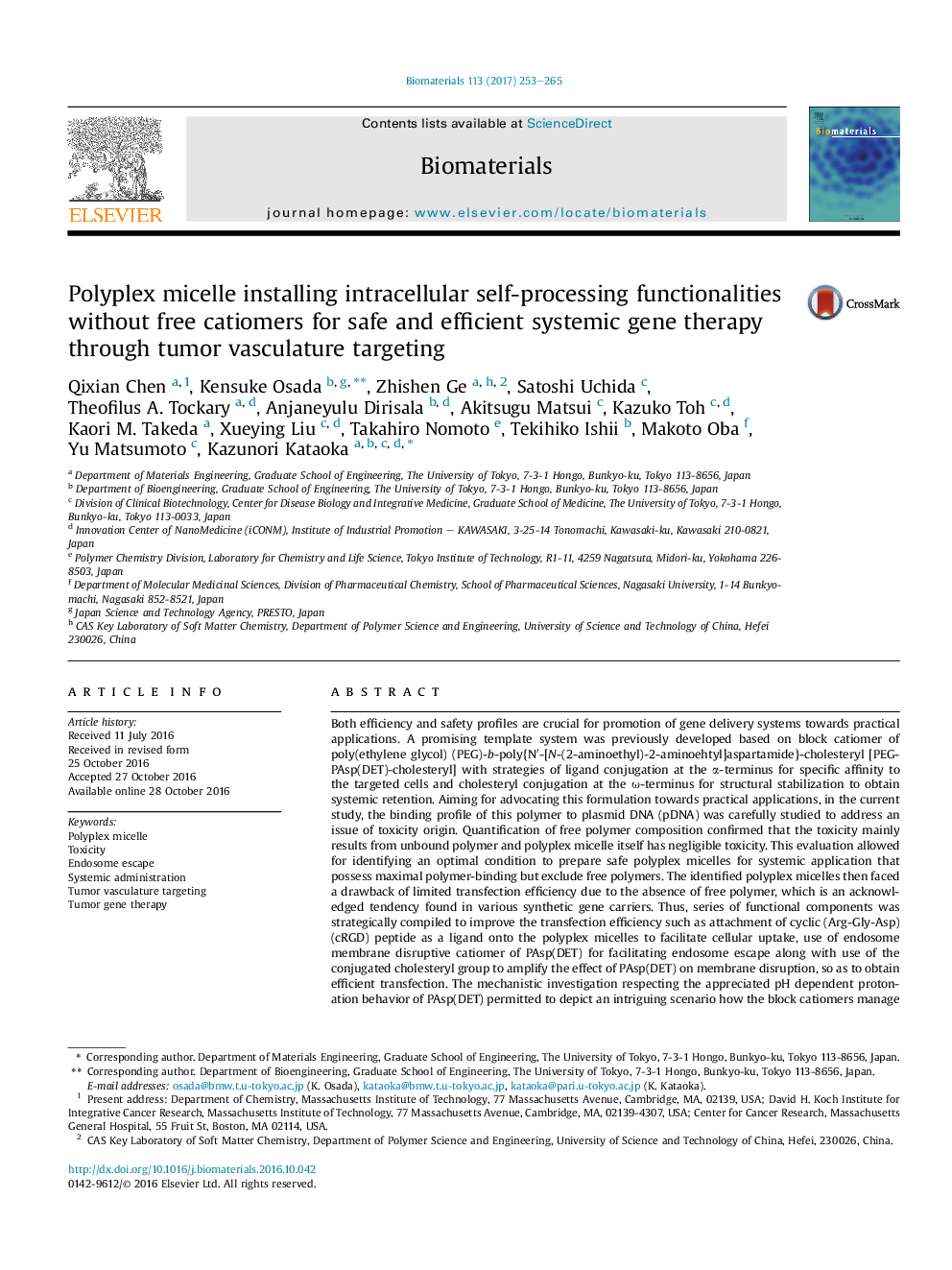| کد مقاله | کد نشریه | سال انتشار | مقاله انگلیسی | نسخه تمام متن |
|---|---|---|---|---|
| 6451062 | 1416154 | 2017 | 13 صفحه PDF | دانلود رایگان |
Both efficiency and safety profiles are crucial for promotion of gene delivery systems towards practical applications. A promising template system was previously developed based on block catiomer of poly(ethylene glycol) (PEG)-b-poly{Nâ²-[N-(2-aminoethyl)-2-aminoehtyl]aspartamide}-cholesteryl [PEG-PAsp(DET)-cholesteryl] with strategies of ligand conjugation at the α-terminus for specific affinity to the targeted cells and cholesteryl conjugation at the Ï-terminus for structural stabilization to obtain systemic retention. Aiming for advocating this formulation towards practical applications, in the current study, the binding profile of this polymer to plasmid DNA (pDNA) was carefully studied to address an issue of toxicity origin. Quantification of free polymer composition confirmed that the toxicity mainly results from unbound polymer and polyplex micelle itself has negligible toxicity. This evaluation allowed for identifying an optimal condition to prepare safe polyplex micelles for systemic application that possess maximal polymer-binding but exclude free polymers. The identified polyplex micelles then faced a drawback of limited transfection efficiency due to the absence of free polymer, which is an acknowledged tendency found in various synthetic gene carriers. Thus, series of functional components was strategically compiled to improve the transfection efficiency such as attachment of cyclic (Arg-Gly-Asp) (cRGD) peptide as a ligand onto the polyplex micelles to facilitate cellular uptake, use of endosome membrane disruptive catiomer of PAsp(DET) for facilitating endosome escape along with use of the conjugated cholesteryl group to amplify the effect of PAsp(DET) on membrane disruption, so as to obtain efficient transfection. The mechanistic investigation respecting the appreciated pH dependent protonation behavior of PAsp(DET) permitted to depict an intriguing scenario how the block catiomers manage to escape from the endosome entrapment in response to the pH gradient. Subsequent systemic application to the pancreatic tumor demonstrated a capability of vascular targeting mediated by the cRGD ligand, which was directly confirmed based on in situ confocal laser scanning microscopy observation. Encouraging this result, the vascular targeting to transfect a secretable anti-angiogenic gene was attempted to treat the intractable pancreatic tumor with anticipation that the strategy could circumvent the intrinsic physiological barriers derived from hypovascular and fibrotic characters. The obtained therapeutic efficiency demonstrates promising utilities of the proposed formulation as a safe systemic gene delivery carrier in practical use.
Journal: Biomaterials - Volume 113, January 2017, Pages 253-265
